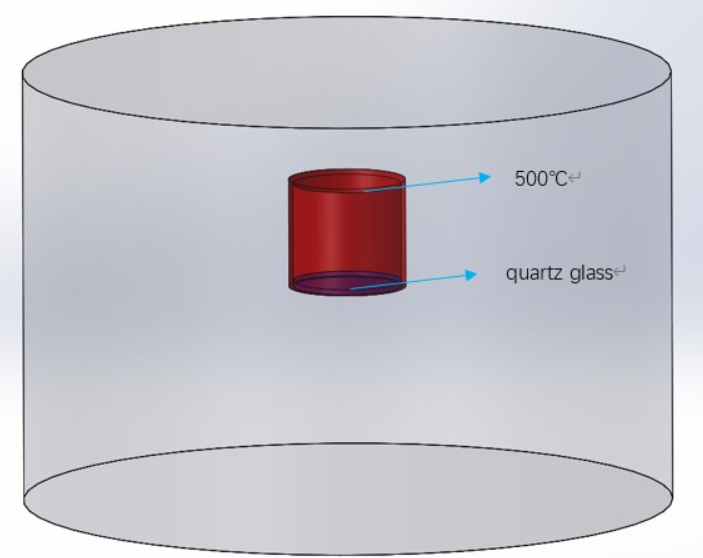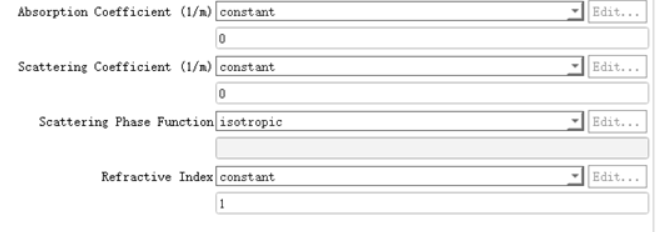-
-
November 21, 2025 at 12:18 pm
617283443
SubscriberDear experts!
I want to simulate a hollow cylinder internal and external flow field and temperature field based on fluent, the temperature of the top surface of the cylinder is 500℃, the air temperature outside the cylinder is 20℃, the diameter of the cylinder is 500mm, the height is 500mm, the bottom of the cylinder is a quartz glass, the thickness is 25mm. the simulation process should consider the natural convection and radiation heat transfer.In the modeling process, quartz glass is a semi-transparent medium, so I use DO radiative heat transfer model, I know that the transmittance of quartz glass plate is 0.9679, the reflectance is 0.0296 and the absorbance is 0.0025. How do I set the Absorption Coefficient, Scattering Coefficient, Refractive Index in the material properties of quartz glass? and Diffuse Fraction in the quartz glass boundary conditions?
-
November 21, 2025 at 4:39 pm
Mark O
Ansys EmployeeYou have to look those properties up for your material. The transmittance is not very meaninful since it depends on the thickness. If you know the transmittance of a unidirectional beam through some thickness L then you can get the absorption coefficient a [m^-1] from the intensity as a fuction of penetration distance I(x) = I(0)* exp(-a*x) and sub x = L.
-
November 22, 2025 at 7:54 am
617283443
SubscriberThank you very much for your reply!I have found in the literature that the transmittance of quartz glass plate is 0.9679, the reflectance is 0.0296, and the absorbance is 0.0025. These parameters are all dimensionless, whereas in Fluent, the units for the absorption coefficient and scattering coefficient are both 1/m. How should I convert the data from the literature into input parameters for Fluent?
-
-
November 24, 2025 at 9:15 am
Mark O
Ansys EmployeeYou must be misreading the literature. Saying "the transmittance of quartz glass plate is 0.9679" is meaningless. It depends on how thick the plate is. The thicker the plate the less will be transmitted throught it and the more will be absorbed by it. Transmittance is an extensive property. It depends on how much material is present and so not an intrinsic property of the material. The absorption coefficeint is an intensive property. See https://en.wikipedia.org/wiki/Attenuation_coefficient
-
- You must be logged in to reply to this topic.


- air flow in and out of computer case
- Varying Bond model parameters to mimic soil particle cohesion/stiction
- Eroded Mass due to Erosion of Soil Particles by Fluids
- I am doing a corona simulation. But particles are not spreading.
- Centrifugal Fan Analysis for Determination of Characteristic Curve
- Issue to compile a UDF in ANSYS Fluent
- Guidance needed for Conjugate Heat Transfer Analysis for a 3s3p Li-ion Battery
- JACOBI Convergence Issue in ANSYS AQWA
- affinity not set
- Resuming SAG Mill Simulation with New Particle Batch in Rocky

-
4352
-
1494
-
1375
-
1197
-
1021

© 2025 Copyright ANSYS, Inc. All rights reserved.









